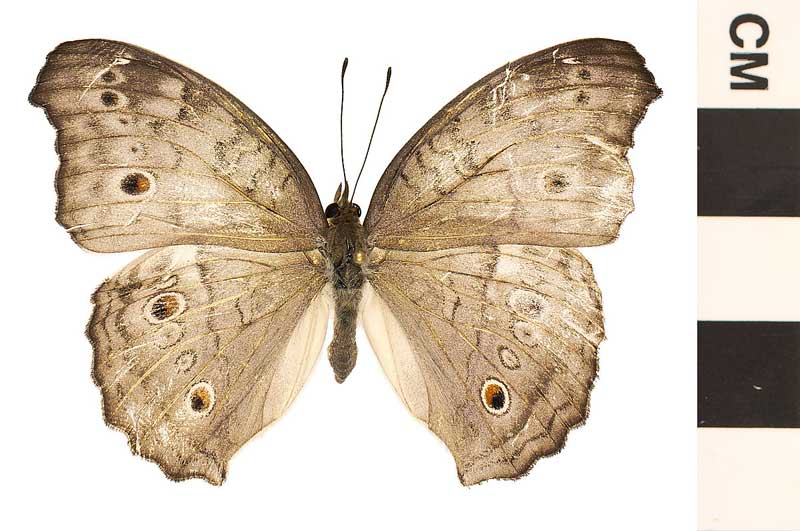
Superregnum: Eukaryota
Cladus: Unikonta
Cladus: Opisthokonta
Cladus: Holozoa
Regnum: Animalia
Subregnum: Eumetazoa
Cladus: Bilateria
Cladus: Nephrozoa
Cladus: Protostomia
Cladus: Ecdysozoa
Cladus: Panarthropoda
Phylum: Arthropoda
Subphylum: Hexapoda
Classis: Insecta
Cladus: Dicondylia
Subclassis: Pterygota
Cladus: Metapterygota
Infraclassis: Neoptera
Cladus: Eumetabola
Cladus: Endopterygota
Superordo: Panorpida
Cladus: Amphiesmenoptera
Ordo: Lepidoptera
Subordo: Glossata
Cladus: Coelolepida
Cladus: Myoglossata
Cladus: Neolepidoptera
Infraordo: Heteroneura
Cladus: Eulepidoptera
Cladus: Ditrysia
Cladus: Apoditrysia
Cladus: Obtectomera
Superfamilia: Papilionoidea
Familia: Nymphalidae
Subfamilia: Nymphalinae
Tribus: Junoniini
Genus: Junonia
Species: Junonia atlites
Subspecies: J. a. atlites
Name
Junonia atlites (Linnaeus, 1763)
Synonyms
Papilio atlites Linnaeus, 1763
Papilio laomedia Linnaeus, 1767
Precis atlites acera Fruhstorfer, 1912
References
Hanafusa, H. 1993: A list of butterflies from Mentawai Islands, Indonesia (3). Futao 14: 8–25.
Vernacular names
English: Grey Pansy
தமிழ்: சாம்பல் வசீகரன்
Junonia atlites, the grey pansy,[1][2] is a species of nymphalid butterfly found in South Asia.[1][2]
Distribution
J. atlites is found in Bangladesh, India, southern China, Cambodia, Indochina, the Malay Peninsula, western and central Indonesia, and the Philippines.[1][2][3]
Description
Upperside of both sexes pale lavender brown, apical half of wings paler. Forewing: cell with, three transverse, short, sinuous black bands, the outermost defining the discocellulars; a similar short, somewhat broader band beyond the apex of the cell; two transverse discal dusky black fasciae, the inner highly sinuous and outward, angulate above vein 4, the outer straighter, somewhat lunular, bordered by a series of whitish ovals with dusky or black centers. The black-centered spots in the ovals in interspaces 2, 5, and 6 margined posteriorly with rich ocherous yellow. Beyond this series of ovals is a lunular, narrow, transverse dark band, followed by sinuous subterminal and terminal broad dark lines. Apex of wing slightly fuliginous. Hindwing: a short slender black loop from veins 6 to 4 at apex of cell-area; two discal sinuous transverse dark, fasciae in continuation of those on the forewing: followed by a series of dark-centered ovals in interspaces 2–6, the ovals in interspaces 2, 5, and 6 with the dark centers inwardly broadly bordered with ochreous yellow; postdiscal, subterminal and terminal dark lunular lines as on the forewing.[4]
Underside lilacine white markings as on the upperside but very delicate, slender and somewhat obsolescent. In the dry-season forms of the males the rows of oval ocelli are only indicated by the yellow-centered ovals. The most prominent marking is the inner discal fascia crossing the wings; this is much less sinuous than on the upperside and not angulated on the forewing. In the females the markings are all heavier and more distinct, the space between the various transverse fasciae tinged with ocherous.[4][5]
Ecology
The larvae of J. atlites feed on Oryza, Pseuderanthemum, Strobilanthes, Asteracantha longifolia, Alternanthera philoxeroides, Barleria, Hygrophila lancea, and Hygrophila salicifolia.[6][3]
References
Varshney, R.K.; Smetacek, Peter (2015). A Synoptic Catalogue of the Butterflies of India. New Delhi: Butterfly Research Centre, Bhimtal & Indinov Publishing, New Delhi. p. 219. doi:10.13140/RG.2.1.3966.2164. ISBN 978-81-929826-4-9.
Savela, Markku. "Junonia atlites (Linnaeus, 1763)". Lepidoptera and Some Other Life Forms. Retrieved July 2, 2018.
Peggie, Djunijanti; Amir, Mohammad (2006). Practical guide to the butterflies of Bogor Botanic Garden. Cibinong, Indonesia: Tokyo, Japan: Bidang Zoologi, Pusat Penelitian Biologi, LIPI ; Nagao Natural Environment Foundation. p. 75. ISBN 9795790943.
Public Domain One or more of the preceding sentences incorporates text from this source, which is in the public domain: Bingham, Charles Thomas (1905). Fauna of British India. Butterflies Vol. 1. pp. 359–360.
Public Domain One or more of the preceding sentences incorporates text from this source, which is in the public domain: Moore, Frederic (1899–1900). Lepidoptera Indica. Vol. IV. London: Lovell Reeve and Co. pp. 67–89.
Savela, Markku. "Junonia atlites (Linnaeus, 1763)". Lepidoptera and Some Other Life Forms. Retrieved July 2, 2018.
Retrieved from "http://en.wikipedia.org/"
All text is available under the terms of the GNU Free Documentation License

